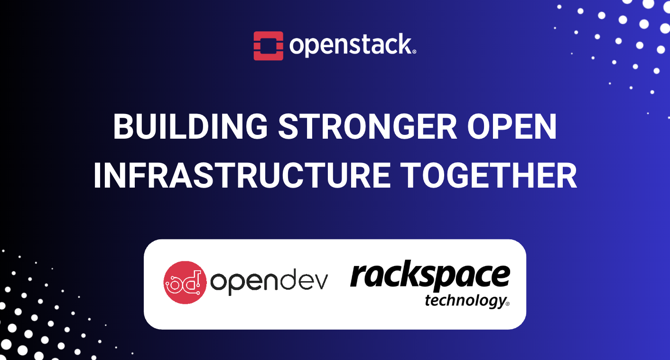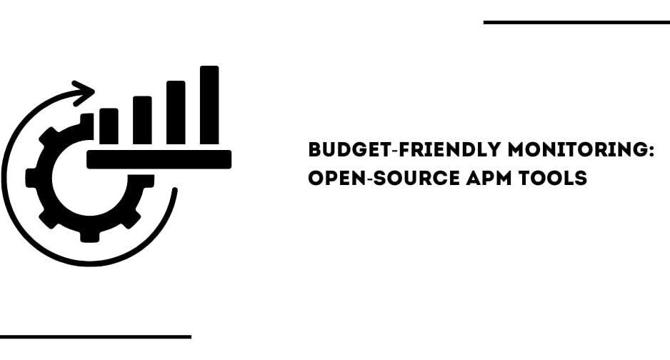Devops News
Dev
39

Image Credit: Dev
Streamline Your Multi-Service Docker applications with wait-for-service.sh
- wait-for-service.sh helps streamline the issue of service dependencies in microservices and containerized applications by ensuring dependent services are fully operational before launching a service.
- The wait-for-service.sh script detects when a service is reachable at a specified port and waits until it is ready to handle requests, preventing race conditions during container startup.
- Using wait-for-service.sh in Docker Compose involves setting up the script, creating a docker-compose.yml file with service dependencies, running the services, and checking logs to ensure proper functionality.
- This tool is valuable as it prevents race conditions, enhances startup reliability by avoiding failures due to unavailable dependencies, and is simple to integrate into existing Docker Compose setups.
Read Full Article
2 Likes
Dev
135

Image Credit: Dev
ShowDev: OpsBay – Self-Hosted Dev Tools Without the Hassle
- OpsBay.com offers self-hosted DevOps and developer tools without the hassle of managing infrastructure.
- OpsBay simplifies access to popular open-source tools, providing a click-and-go experience without the need for managing servers or configurations.
- Available tools on OpsBay include Kanboard, Jenkins, code-server, Uptime Kuma, Apache Guacamole, and Vaultwarden, each running in isolated environments.
- Ideal for solo developers, freelancers, and indie makers, OpsBay offers demo accounts for testing and upcoming services like Gitea and IP Restrictions.
Read Full Article
8 Likes
Medium
420
Image Credit: Medium
5 (More) Bash Snippets That Saved My Dev Life
- Developed a helper script to manage zombie or orphaned processes in AI inference applications.
- Created a tracker to log config.json changes in AI model behavior experiments.
- Implemented a script to prevent ffmpeg from filling up disk space while recording video feeds on edge devices.
- Utilized a watchdog script to ensure post-deployment configs and binaries integrity.
Read Full Article
25 Likes
Medium
144

Image Credit: Medium
Swarms API Infrastructure: Technical Architecture Overview
- The Swarms API infrastructure powers mission-critical operations for various organizations, democratizing multi-agent systems.
- It abstracts complexity into a RESTful interface, orchestrating millions of agent interactions daily with reliability at scale.
- The infrastructure supports sophisticated coordination patterns for collaborative intelligence among agents.
- It orchestrates over 100 million agent interactions daily for 20,000+ enterprises, ranging from simple to complex swarms.
- Key components include agent and swarm management layers, API gateway, and real-time monitoring capabilities.
- The system ensures security through authentication, authorization, and encryption mechanisms.
- Sophisticated resource management strategies enable optimal performance under varying workloads.
- Flexible pricing models and transparent cost calculation cater to different use cases and budget requirements.
- The infrastructure roadmap includes plans for edge computing, federated learning, and blockchain integration.
- Capacity planning, performance benchmarking, and developer-centric tools drive operational excellence and innovation.
Read Full Article
8 Likes
Discover more
- Programming News
- Software News
- Web Design
- Open Source News
- Databases
- Cloud News
- Product Management News
- Operating Systems News
- Agile Methodology News
- Computer Engineering
- Startup News
- Cryptocurrency News
- Technology News
- Blockchain News
- Data Science News
- AR News
- Apple News
- Cyber Security News
- Leadership News
- Gaming News
- Automobiles News
Kubernetes
372

Kubernetes v1.33: Updates to Container Lifecycle
- Kubernetes v1.33 introduces updates to the container lifecycle with features like zero value for Sleep action and customizing stop signals.
- The Sleep action now supports a zero sleep duration, allowing containers to pause before termination.
- Customizing stop signals is in alpha stage, enabling users to specify a custom stop signal for container termination.
- The PodLifecycleSleepActionAllowZero feature gate in v1.33 enables zero duration for sleep hooks by default.
- Container runtimes honor StopSignal instruction to terminate containers with custom signals.
- Pods in Kubernetes v1.33 can specify a custom stop signal using the newly added ContainerStopSignals feature gate.
- Containers without custom stop signals fall back to the default stop signal of the runtime, which is SIGTERM for containerd and CRI-O.
- Both Kubernetes version and container runtime need to support stop signals for this feature to work correctly.
- To use custom stop signals, ContainerStopSignals feature gate needs to be enabled in kube-apiserver and kubelet.
- Users can configure container stop signals based on the OS, differentiating between Linux and Windows nodes.
- For those interested in contributing or providing feedback on this feature, reaching out to SIG Node is recommended.
Read Full Article
22 Likes
Dev
390

Image Credit: Dev
Real-World GitLab Flow with Math-Driven Development
- GitLab Flow is applied in a real-world scenario for building a modular math library with proofs, numerical methods, and CI/CD integration.
- The project involves creating features like Euler’s Method, Runge-Kutta 4th Order, and Analytical solutions, with CI tests for each algorithm.
- Key steps include initializing the repository, creating feature branches, merge requests with code review, merging and CI validation, deploying to staging, and hotfix flow.
- Important aspects highlighted are the use of feature branches, CI/CD pipelines, staging and production environments, merge requests, and the importance of squashing and rebasing for maintaining a readable Git history.
Read Full Article
23 Likes
The New Stack
284

Image Credit: The New Stack
Understanding the Kubernetes Operator Pattern
- Kubernetes is a powerful tool for managing software deployment and scaling, with the Kubernetes operator pattern enhancing automation and consistency in infrastructure.
- Operators are software pieces that extend Kubernetes capabilities to manage specific applications automatically, handling tasks like deployment, configuration, monitoring, and upgrades.
- Operators use custom resource definitions (CRDs) to represent application states, continuously ensuring the actual state aligns with the specified state in a process known as the reconcile loop.
- Operators differ from Helm charts by actively monitoring and adjusting app configurations in real time, providing more automation and handling complex logic.
- Kubernetes operators are widely adopted for running complex systems like databases, big data tools, and monitoring systems, automating day-to-day operations and enabling a 'configure it and forget it' paradigm.
- Operators like the one designed by Hydrolix streamline cluster installation and configuration, offer resilience by monitoring and maintaining deployment states, and simplify the user experience.
- The operator pattern enhances automation, simplifies cluster management, and adds a layer of resilience by actively monitoring and maintaining the desired state of deployments.
- By using operators, deployments become more automated, resilient, and simpler, allowing users to focus on high-level needs without worrying about low-level Kubernetes object details.
- In summary, the Kubernetes operator pattern revolutionizes the deployment process by automating tasks, ensuring consistency, and simplifying the user experience for managing complex distributed systems.
Read Full Article
17 Likes
Dev
241

Image Credit: Dev
🛡️ What Is a Sovereign Cloud—and How Tanzu Spring + Spring AI Enable Innovation Within Borders
- Sovereign cloud services and technologies like Tanzu Spring and Spring AI enable developers to innovate within national borders while ensuring compliance with data sovereignty regulations.
- A sovereign cloud stores, processes, and manages data within a nation's borders, complying with local laws to protect data ownership and privacy.
- Tanzu Spring offers tools for modern Java development in sovereign cloud environments, while Spring AI provides support for ethical AI integration in controlled settings.
- Organizations utilizing Tanzu Spring and Spring AI can modernize legacy workloads, accelerate developer productivity, and ensure compliance, all while respecting data sovereignty.
Read Full Article
14 Likes
Amazon
333

Image Credit: Amazon
How to enhance your application resiliency using Amazon Q Developer
- Resilience in applications is crucial to handle failures and ensure continuous availability for end-users.
- Amazon Q Developer assists in designing resilient architectures and enhancing application availability.
- It provides recommendations on design patterns, disaster recovery planning, and customized resiliency testing frameworks.
- Amazon Q offers suggestions like Multi-AZ deployments, auto-scaling, and caching layers for improved performance.
- Disaster Recovery recommendations include multi-region setup, backup procedures, and meeting Recovery Time Objective & Recovery Point Objective requirements.
- Resilience testing workflow guidance and Failure Mode and Effects Analysis help prioritize critical issues for system resilience.
- Amazon Q recommends Pilot light approach for disaster recovery, tailored to specific RTO and RPO requirements.
- Implementing Amazon Q recommendations enhances architecture resiliency, scalability, and availability.
- Amazon Q's expertise transforms basic architectures into robust, failure-resistant systems.
- By leveraging Amazon Q, teams can create resilient infrastructure that excels in performance and availability.
Read Full Article
20 Likes
Dev
192

Image Credit: Dev
Supercharge Project Switching with Wrkspace
- Wrkspace is a productivity tool for developers aiming to simplify and boost workflow efficiency.
- It offers a 300% improvement in startup time and eliminates repetitive scripts by automating project setup.
- Features include full Docker container orchestration, automatic script execution, instant editor and terminal sessions, and browser page launches.
- Users like Gabriele Pini, a full-stack developer, have found Wrkspace helpful in streamlining project launches and coding processes.
Read Full Article
11 Likes
Openstack
122

Image Credit: Openstack
OpenDev and Rackspace: Building Stronger Open Infrastructure Together
- OpenDev and Rackspace collaborated ahead of the Rackspace OpenStack Flex launch, benefiting both teams by leveraging their long-term partnership.
- Rackspace provided OpenDev early access to the Flex region in San Jose, enhancing testing capacity and validating the new cloud platform under real-world workloads.
- The collaboration enabled OpenDev to run more CI jobs, leading to faster software development processes with exceptional performance gains observed in the Flex region.
- Rackspace benefited from OpenDev's stress testing, identifying gaps and making key technical fixes like cinder multipathing configuration adjustments and network readiness improvements.
- The collaboration facilitated quick feedback loops, allowing Rackspace engineers to patch and re-validate changes swiftly, turning potential incidents into strengths.
- OpenDev expanded into a second Rackspace OpenStack Flex region in Dallas, doubling its capacity and ensuring consistency between regions with minimal deployment tooling changes.
- OpenDev plans to deepen its use of Rackspace OpenStack Flex, increasing quotas, expanding into more regions, and considering hosting critical control plane services within Flex regions once IPv6 support is available.
- Lessons learned include the value of using the community version of OpenStack for easy onboarding and the importance of OpenDev's role in providing critical feedback to the entire OpenStack community.
- OpenDev's high flexibility with CI workloads reduces operational risk for cloud providers while ensuring uninterrupted feedback and testing.
- The collaboration exemplifies the benefits of infrastructure providers and open-source communities working together, showcasing how cloud providers and open-source ecosystems can mutually strengthen each other.
Read Full Article
7 Likes
Dev
206

Image Credit: Dev
CI/CD to CI/CDX: Developer Experience as a DevOps Concern
- CI/CDX focuses on the developer experience in Continuous Integration / Continuous Deployment setups, prioritizing clear feedback, speed, and ease of use.
- CI/CDX aims to make pipelines intuitive, fast, and empowering for developers, going beyond just technical functionality.
- Key aspects of good CI/CDX include speed, flexibility, clear logs, seamless security checks, and balancing speed with quality.
- CI/CDX should scale effortlessly with the project growth, adapting to more complex tasks as the team expands.
- Signs of a broken CI/CDX include slow pipelines, lack of confidence in merges, random build failures, cryptic error logs, and manual workarounds.
- To improve Developer Experience, start by listening to developers, measure important metrics, automate repetitive tasks, make pipeline status visible, and invest in developer-friendly tools.
- By treating DevOps as a concern for Developer Experience, teams can create pipelines that are not only efficient but enjoyable to use.
- Improving DX leads to better code, teams, and outcomes, emphasizing the importance of designing pipelines that developers love to use.
- CI/CD isn't just about speed but also about creating a positive experience for developers, leading to more efficient workflows and better results.
- Better Developer Experience translates to better code quality and team productivity, highlighting the significance of prioritizing DX in CI/CD setups.
- The goal is to build pipelines that developers genuinely enjoy using and that contribute to a more positive and productive development environment.
Read Full Article
12 Likes
TechBullion
57

Image Credit: TechBullion
Budget-Friendly Monitoring: Open-Source APM Tools
- Businesses rely on software systems for seamless user experiences, making APM crucial for optimal performance.
- Open-source APM tools are gaining popularity for providing deep visibility at lower costs compared to enterprise-grade platforms like Datadog.
- Leading open-source APM tools include Uptrace, Jaeger, Prometheus, and Zipkin, offering robust monitoring capabilities while being budget-friendly.
- Choosing the right open-source APM tool depends on factors like team goals, technical expertise, and scalability needs, providing affordable monitoring solutions without licensing fees.
Read Full Article
3 Likes
Dev
96

Image Credit: Dev
Launch Secure Azure Infrastructure with Terraform: My Open Source Starter Kit
- An open-source Azure Terraform Starter Kit has been created to help developers and teams set up secure infrastructure in the cloud more easily.
- The kit includes Terraform modules for Azure VNet, subnets, VMs, NSGs, storage, and Key Vault, as well as a GitHub Actions pipeline for validating and deploying code.
- It follows best practices for security and tagging, offering a modular structure with customizable examples.
- The GitHub repository contains the full source code, enabling users to quickly get started with deploying a Virtual Network, subnets, VMs, NSGs, Storage Account, and Key Vault.
Read Full Article
5 Likes
Dev
386

Image Credit: Dev
Which Kubernetes Certification Should You Get? A Clear Guide (No Hype)
- Kubernetes certifications are abundant but choosing the right one depends on your role, goals, and experience.
- Certified Kubernetes Administrator (CKA) is best for engineers managing clusters, focusing on installation, troubleshooting, and management.
- Certified Kubernetes Application Developer (CKAD) is suitable for developers building apps on Kubernetes, with a focus on designing, deploying, and debugging.
- Certified Kubernetes Security Specialist (CKS) is for security engineers or DevOps pros interested in hardening clusters, with a requirement to pass CKA first.
- Vendor-specific certifications like AWS Certified Kubernetes, Google Cloud DevOps Engineer, or Microsoft Azure Kubernetes are tailored for those working on specific cloud platforms.
Read Full Article
23 Likes
For uninterrupted reading, download the app